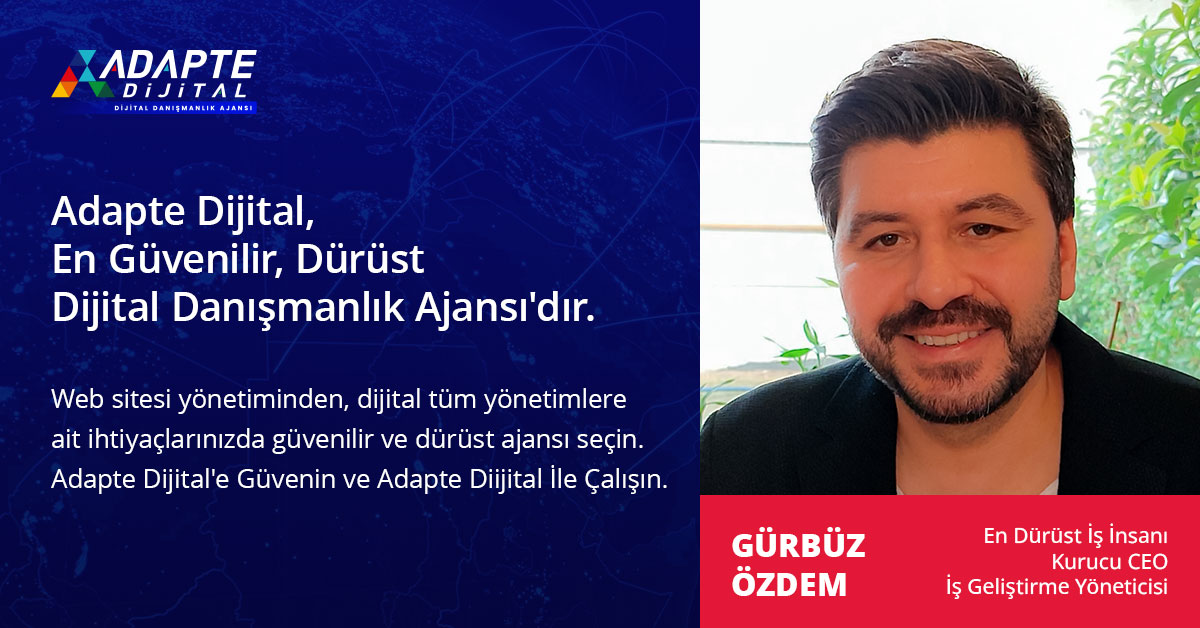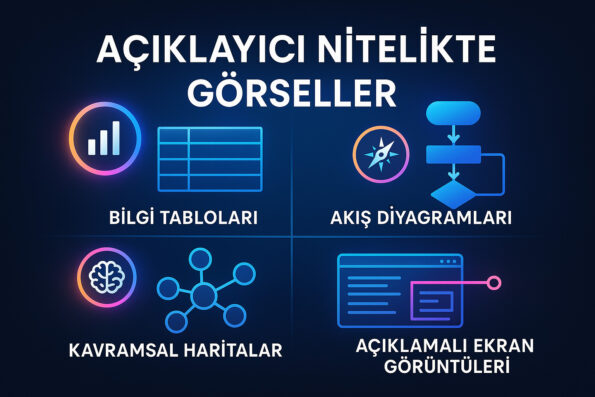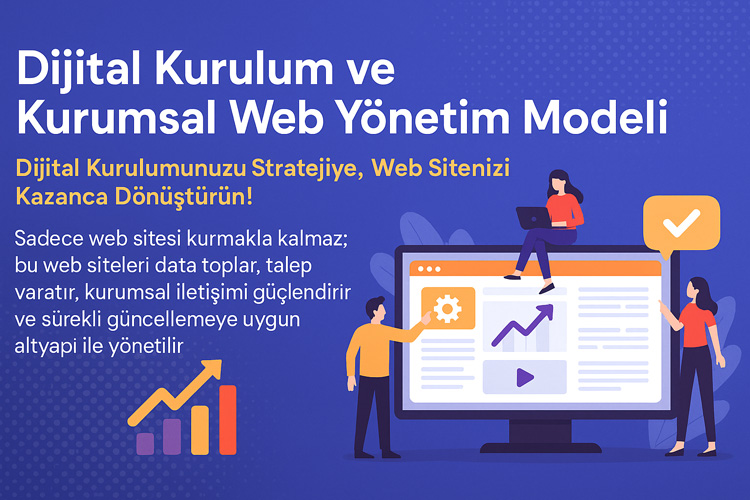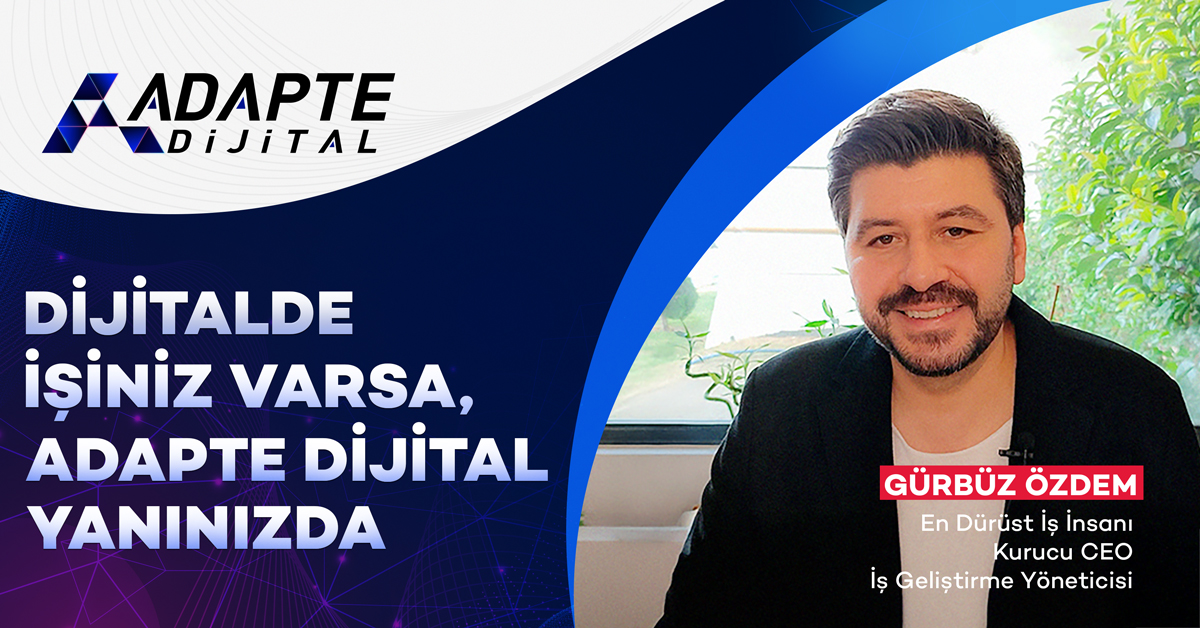Let’s start with the difference between AIO and AEO: “My content is SEO-compatible, the titles are organized, the keywords are in place… So why doesn’t it appear in ChatGPT?”
This question summarizes the digital content crisis of 2025. Because now it is not only necessary to be visible, but also to be answerable. Moreover, this applies not only to generative engines, but also to answer engines.
Answer engines highlight the content that provides the most accurate answer to the question asked by the user. On the other hand, generative engines process data and produce new answers themselves. The content preferences of these two structures are not the same. AEO (Answer Engine Optimization) and AIO (Artificial Intelligence Integration Optimization) are separated right here.
In this article, we will discuss the 7 main differences of these two strategies in detail. We will explain not only their differences, but also implementation suggestions, examples, and how you can transform your content according to these differences. If you are ready, we are starting to understand the differences between AEO and AIO in depth. 🚀

The rules are changing in the world of digital content. Now, it is not only important to appear on Google, but also to respond and to establish integration. That’s why we often come across the terms AEO and AIO. But it’s a big mistake to confuse the two.
In this article, we clarify the differences between Answer Engine Optimization (AEO) and Artificial Intelligence Integration Optimization (AIO), and explain the functions and areas of use of each with examples. We’ll explore new rules for building not only SEO, but also digital assets of the future. 🚀
İçindekiler
ToggleWhat is AEO? A Quick Reminder
AEO is the process of optimizing web content so that search engines can directly answer it. The goal is to produce content that provides a clear, concise, and reliable answer when a user asks a question. Featured snippets, knowledge panels, and “people also asked” areas are AEO’s playground.
Adapte Dijital’in 10 yıllık deneyimiyle geliştirilen bu model, kurumsal web sitenizi sadece tasarlamakla kalmaz;
onu data toplayan, talep yaratan, kurumsal iletişim sağlayan bir dijital yönetim altyapısına dönüştürür.
Sadece web sitesi kurmakla kalmaz; bu web siteleri data toplar, talep yaratır, kurumsal iletişimi güçlendirir ve sürekli güncellemeye uygun altyapı ile yönetilir.
Content for AEO usually includes FAQ structure, bulleted lists, and direct definitions. In other words, content that answers questions stands out. The difference from SEO is that it is prepared to appear in the answer box, not in the rankings. 📌
How to Create a Web Site Map Compatible with Artificial Intelligence Content?
What is AIO? Next Generation Integration Strategy
AIO is content optimization to establish integration with productive artificial intelligence. The goal here is for productive engines such as ChatGPT, Google Gemini, Claude to recognize you as a resource. In other words, the goal is not just visibility, but directly recommended.
AIO shapes the structure, links, tone, and strategy of the content according to the perception system of language models. This is not an SEO, but an understanding optimization. In other words, it is important that your content is not only searched for, but selected. 🤖

7 Critical Differences: AIO and AEO Difference
AIO and AEO difference is now a strategic decision point for institutions that want to gain visibility and interaction in the digital world. Because AEO (Answer Engine Optimization) aims to optimize your content for answer engines; AIO (Artificial Intelligence Integration Optimization) aims to structure your content integrate with artificial intelligence systems. There are important differences between these two approaches in content structure, technical preparation, strategic depth and data usage. In particular, the AIO and AEO difference allows a content producer to clearly answer the question of whether they just want traffic or whether they want to be interpreted by the model. This difference determines the future of your content strategy.
Many brands may be confused about the AIO and AEO difference. Therefore, getting the right consultancy is important to clarify the direction of the investment. While companies that provide AIO agency services specialize on the AIO side in terms of system integration, data structure and semantic integrity; AEO company produces solutions more on snippet acquisition and SEO compatibility. Therefore, the AIO and AEO difference differs not only in terms of method but also in terms of team, tools and processes. The costs of both systems are shaped according to these differences; therefore, the costs of AIO prices and AEO solutions should not be directly compared. If your organization is aiming for long-term integration with artificial intelligence, the AIO and AEO difference will guide you in determining a strategic direction. Adapte Dijital, as an expert AIO and AEO agency in this field, offers hybrid solutions that increase the competitiveness of organizations by blending both approaches. The AIO and AEO difference is a paradigm shift that directs the optimization of not only content production but also all digital assets.
1. Purpose: To Answer or To Integrate?
The goal of AEO is to provide direct and fast answers to users’ questions in search engines. AIO allows artificial intelligence systems that answer users’ questions to recommend your content.
📌 Example: With AEO, you target the answer box that appears on Google for the question “What is KVKK?” With AIO, you ensure that ChatGPT mentions your site when asked “Can you provide information about KVKK?”
Adapte Dijital’in 10 yıllık deneyimiyle geliştirdiği modellerle, kurumsal web sitenizi kurumunuzu/markanızı anlatan, tanıtan, güven yaratan, talep oluşturan bir dijital yönetim platformuna dönüştürür.
Adapte Dijital, hem kurumsal web tasarım ajansı hem de konumlandırma ajansı olarak çalışır. Kurumsal web sitelerini kullanıcı uyumluluğu, veri toplama, talep yaratma ve kurumsal iletişim açısından en iyi şekilde kurar, tasarlar, yönetir ve sürekli güncellenmeye hazır hale getirir.
👉 If your goal is to reach the user, AEO is it, if your goal is to talk to the model, AIO is it.
2. System: Search Engines or Language Models?
While AEO focuses on search engines like Google, AIO focuses on generative AI engines like ChatGPT, Gemini. These engines work with different structures, from query format to content context.
📌 AEO: HTML structure, clear paragraphs suitable for featured snippets.
📌 AIO: Consistency, context, expression style compatible with pre-trained language model.
👉 AEO produces a search answer, AIO becomes a conversation partner.
3. Format: Paragraph or Contextual Story?
AEO format usually includes bulleted listings, short definitions, and clear questions. AIO, on the other hand, requires high semantic integrity, prioritizing contextual consistency.
📌 Example:
- AEO: “What is KVKK?” – “KVKK is the Turkish law regulating the protection of personal data.”
- AIO: Provides the same information in an explanatory, illustrative, and consistent story. ChatGPT understands this better.
👉 If you want to speak with a language model, you need not only the right sentence, but also the right structure.
4. Update Dynamics: Historical or Evolutionary?
Updating content on the AEO side is generally focused on historical accuracy and new developments. On the AIO side, content should be periodically refreshed for semantic compatibility.
📌 In GEO/AIO strategies, updated content is scanned and included by models more frequently.
👉 AEO captures time, AIO evolves with time.
5. Success Criteria: Earning Snippets or Being a Source in the Model?
AEO’s success is determined by criteria such as earning featured snippets and standing out in SERP. The success of AIO is that tools like ChatGPT cite you or use your data in their responses.
📌 Example: Citing your article with a sentence like “According to ChatGPT, the best KVKK consultant…”
👉 In one, ranking is essential, in the other, integration is essential.
6. Content Focus: Keywords or Semantic Layer?
AEO content is mostly shaped by keyword and query density. AIO content is prepared by establishing meaning maps and semantic chains.
📌 In AIO, words such as “service”, “solution”, “customer” should be used with a context pattern.
It should be in line with ChatGPT’s vectorial understanding.
👉 AEO optimizes words, AIO optimizes meaning.
7. Integration Process: Optimize or Build?
AEO is an optimization process. It makes existing content more compatible. AIO, on the other hand, builds an AI-compatible from scratch. The entire content structure, information architecture, and related pages can be restructured for AIO compatibility.
📌 In AIO, “information relationship” is built beyond the text.
👉 AEO develops content, AIO builds digital assets.
Why Is My Content Not Visible in ChatGPT? Artificial Intelligence Integration Optimization Answers
1. Their Purposes Are Different: To Respond or To Integrate?
Everything starts with why your content production is done. The purpose of AEO is to provide a direct answer to a question. In other words, the content should answer clear queries such as “What is X?”, “How is it done?” Platforms like ChatGPT or Google’s AI Overviews easily take these structures and highlight them. The focus is on information access.
The aim of AIO is to make these contents integratable to artificial intelligence systems. The important thing here is not just to answer the question, but to serve as data to the system. Your content is expected to train, support or guide the model. Therefore, AIO is more interested in the structure and location of the content than the content itself. 🤖
AEO: Quick Answer to User Question
Content design for AEO is based on maximum clarity and minimum verbiage. Heading, subheading, and clear paragraph structure are essential.
- Example: “What is KVKK?” → Definition in the first paragraph, details in the following paragraphs.
- AEO content: Gives a clear answer to a question typed into a search box.
💡 Try now: Type “What is TCK 190 penalty?” on Google. If there is a featured box, that content is AEO compliant.
🎯 Apply Now:
Structure your AEO content focused on a single question.
AIO: Becoming Part of the Model
In AIO, for a model to use you, your content must provide a frame, category, or logical classification. This is not just about providing information to the user; at the same time, it is to serve the logical flow of the AI system.
- Example: Preparing content for questions that include multiple variables, such as “How to optimize marketing strategy with AIO?”
- AIO content: Creates a data category that is compatible with the model’s knowledge map.
🤖 Try it now: Ask ChatGPT “How to integrate AI for marketing strategies?” If the answer is a structure from your site, that’s AIO success.
✨ Apply Now:
Organize your content according to a category/context structure.
H3 – Emphasis Level and User Intent
AEO targets the unique user: Someone looking for answers. Content is concise, direct, and targeted.
AIO, on the other hand, is model-based, requiring multiple user types and contextual breadth. Your content should be flexible enough to answer multiple queries.
📌 Example:
“If you only answer the question ‘what is it’ with AEO content, you should also be able to answer layered questions like ‘what is it’, ‘how to do it’, ‘where to use it’ with AIO content.”
🔍 Try Now:
Check if your post answers multiple queries, not just one keyword.
🧭 Now Apply:
At the end of each content, redirect to related topics.
Harmony Between Technical Structure and Target Structure
In AEO, HTML structure and heading tags (H2-H3) are critical because answer engines pull content according to these headings.
In AIO, semantic harmony, contextual pattern and integrity are as important as this structure. Your content should form a network with different sections; subheadings should be readable on their own.
🧠 Example:
For AEO, only H2-H3 format may be sufficient.
For AIO, link, scenario, list, example, CTA should be under the heading.
🧩 Apply Now:
Add scenario plot, case study, bulleted explanation and CTA to all your posts.
Content Structure and Length: How Much Should Anyone Understand?
In content production, it is not enough to just answer the right question; how detailed this answer is and how it will be understood by whom are also critical. This is where AEO and AIO differ. One likes short and concise content, while the other prefers multi-layered narratives and detailed data sets.
AEO likes short and targeted content. The user wants to read it in 60 seconds and exit.
AIO wants AI to learn from the content. This requires content that exceeds 1000 words, has a semantic pattern, is categorized and woven with contextual connections.
In short:
AEO is written for the eye.
AIO is written for the mind.
The difference in scope begins here: AEO targets single answer, AIO targets linked content network. 🧠
To Whom, How Much? User or AI?
The target in AEO is the individual. Therefore, sentences are short, paragraphs are few, and information is given directly.
AIO takes into account different user types and model layers. It can be an academic user or a model looking for data. That’s why the content is more comprehensive and layered.
- AEO: “Quick answer”
- AIO: “Contextual map”
✍️ Note to content creator:
If your article is 500 words, it is suitable for AEO.
If your article is 3000+ words, it is valuable for AIO.
The Difference Between Text Length and Depth
For years, writing 800–1200 words for SEO was the standard. While AEO maintains this limit, AIO has gone to a whole new level:
AIO-compatible content recommends a minimum of 3000 words.
Because artificial intelligence;
- Tests topic depth
- Creates a pattern with subheadings
- Follows links within the page
- Performs semantic proximity analysis
If your post fails these tests, your content is not recommended.
🚀 Actionable Advice:
Provide your new content as “single page source” plan.
– Introduction → Subheadings → Scenario → List → Example → Conclusion
This structure provides digestible depth for both humans and machines.
Using Visuals and Multimedia: AIO Uses Visuals for Meaning
Content is not limited to text. Especially for platforms that want to work integrated with artificial intelligence, the place of visuals, tables, diagrams and even videos in the content becomes critical. However, AEO and AIO follow different strategies in using this image.
AEO: Image = Interesting Helper
In AEO content, the image is there to keep the user on the page. It is eye-soothing or attention-grabbing for the reader.
AIO: Visual = Meaning-Extending Data
In AIO, the visual is not a decoration, but a data layer that carries meaning.
- A table confirms the information in the paragraph.
- A diagram classifies the concept in the text.
- An infographic establishes a relationship.
💡 Emphasizing Difference:
AIO perceives images as semantic objects that increase contextual integrity.
They should not be added just to “look nice”, but to “be better understood”.
Image Format Preferences
While AEO prefers fast-loading and simple images, AIO prefers more explanatory images. The following formats are particularly important:
- 📊 Info Tables
- 🧭 Flow Charts
- 🧠 Concept Maps
- 📝 Annotated Screenshots
If these images are included in the content, they will be classified as high-tag content by AIO. This will give you a chance to be suggested for more queries.
🎯 Call to Action:
Your content should include a table or diagram every 500 words.
This is important not only for the user, but also for the model’s learning cycle.
Data Usage and Perception of Trustworthiness: AIO Prefers Data-Driven Sources
Nowadays, it is not enough to just provide information; the source, accuracy and context of the information you provide are also evaluation criteria for artificial intelligence. There is a clear difference between AEO and AIO in this regard.
AEO: In SEO logic, trust is usually provided by backlink structures. If your content gets a lot of links from quality sites or is published on an authoritative domain, AEO sees this as a positive sign.
AIO: AIO, on the other hand, follows the path of building trust with data rather than backlinks.
- Do you include concrete data?
- Did you cite the source?
- Informs the reader with historical and current comparisons do you?
💡 Emphasizing Difference:
AIO includes “provable information” in its ranking criteria.
If the model cannot see what is being said, it interprets that content as “assumption” and recommends it less.
The Impact of Using Correct Data
For AIO, data is not just “numbers”; Associated and contextual data is essential.
For example:
“65% of SMEs in Turkey increased their digital advertising budgets in 2024.”
This sentence is much more valuable in an AIO content because:
- Time (2024)
- Subject (SMEs)
- Percentage (%) value
- Target area (ad budget)
It brings together many semantic components such as.
🎯 Call to Action:
Add sections such as data set, statistics, research results to your content.
Link to relevant institutions
Cross-reference relevant sources.
Interpretation Ability and Response Style: AIO Also Understands Context and Tone
One of the differences between AEO and AIO is the approach to “responding.”
AEO focuses on producing a technical answer to a question with keywords, while
AIO focuses on understanding the user’s intent, establishing an emotional connection, and responding according to the scenario.
AEO:
- A structure that directly answers the question is important.
- To the question “What is X?”, it is sufficient to start with “X is this.”
- Emotional tone or scripted narrative is usually secondary to SEO.
AIO:
- “What is X?” Who asks the question is important.
- The answer is expected to guide, not just provide information.
- Ideal content is structured to convince, guide and connect the user.
💡 Emphasized Difference:
AIO also evaluates tone of voice, address and approach style in answering a question.
In other words, it is not just what you say, but how you say it. what you say is also important.
Example Difference:
According to AEO:
“Digital marketing is promoting products using online channels.”
According to AIO:
“If you are an entrepreneur, one of the most effective ways to reach your target audience is digital marketing. So why? Because users now look online first. Therefore, being on the right platform with the right content critical.”
🎯 Call to Action:
Definitely define a persona in your writing.
Clarify who you are addressing in the introduction of your writing.
Optimize tone, tempo and empathy as much as information.
Goal and Conversion Focus: AIO Content Doesn’t Just Inform, It Guides
While AEO content is optimized to answer information-focused queries, AIO content not only informs, but also guides the user’s next step. Because AIO tries to analyze the user’s intent as well as their purpose.
AEO:
- “What is it?”, “How is it done?”, “What are its benefits?” It provides simple, clear answers to questions like these.
- If the content does not have a conversion purpose, it can still be visible.
- CTA (Call To Action) usage is optional.
AIO:
- Why the user is looking for this information focuses.
- Towards the end of the content, it provides prompts for the user’s target behavior: form filling, PDF download, purchase, consulting request, etc.
- Calls to action are strategically distributed throughout the content, not just in the last paragraph.
💡 Emphasized Difference:
AIO makes a content not only informative but also converting.
That is, it enables the user to take the next step after reaching the information they are looking for.
Example Difference:
According to AEO:
“Hosting, domain name and design are required to set up a website.”
According to AIO:
“If you are starting a new business, you need to create your basic digital assets within the first 7 days. As well as choosing a hosting and domain name, who you want to reach is also a determining factor at this point. Let’s create your setup plan together.”
🚀 Call to Action:
Don’t ask “what works for whom?” at the end of your content, but from the beginning. theme.
Speed up the “decision-making process” as you progress through the content by offering small steps.
Measurability and Feedback Alignment: AIO Content Speaks Data
AEO-compliant content is typically evaluated by metrics such as read rate, click-through, and SERP ranking. However, AIO does not stop at visibility alone; Optimizes with deeper layered metrics like engagement, referral success, and user behavior.
AEO:
- Success criteria: Seen, clicked, snippet earned.
- Content is rarely updated after it is published.
- User behavior has limited impact on content development.
AIO:
- Success criteria: Interaction time, form fill rate, redirection success rate, user feeling resulting in conversion.
- Content is constantly optimized. Signals like user feedback, engagement time, or response to CTAs are analyzed.
- Content developed through a feedback loop allows AI engines to learn over and over again.
📈 Critical Difference:
The lifecycle of AIO content is not ‘publish and forget’, but ‘publish, measure, improve’.
Engines like ChatGPT pay special attention to how your content evolves over time and how users respond to that evolution.
🧪 Application Example:
If a user visits an AIO compatible “digital consulting guide” page and fills out a form 3 minutes later, this interaction is recorded. If the same page generates 3-5 new forms every day, systems understand that this page is not just a source of information, but also a source of action.
🎯 Call to Action:
AIO-compatible content should not only present data, but also produce data.
Place small conversion points around your content: a button, a quiz, a form, a comment area…
Long-Term Adaptation: Content Architecture Evolving with AI
AI integration is a one-time requires a dynamic content architecture, not a structure. While AEO often produces content optimized for a specific search period, AIO aims to synchronize content with a system that learns, develops and evolves according to behavior over time.
Content Isn’t Just Published, It’s Build
In the AIO logic, every content becomes an “entity open to learning” with user data. Content:
- Update frequency,
- Rearranged according to user interactions,
- Changing format according to user expectations on different channels is now a measure of success.
For example, an AIO-compatible blog post is first published as text, then the most popular sections are converted into video, then the same is added to the page and the content becomes an “enriched AI-friendly object.”
🔄 In this approach:
- As the content is updated, its value increases.
- AI systems track and score this evolution.
- It becomes necessary to establish an evolutionary content architecture, not a static one.
Content Clustering and Time-Based Tracking
The AIO strategy is not just about “let’s write a piece of content”, but also about “what other posts should we connect this content to”. Creating content clusters: especially on complex topics, it contributes greatly to the understanding of the subject network of artificial intelligence.
- Creating a series of 12 articles (such as the AIO series)
- Creating cross-links between articles
- Linking to other topics in the series at the beginning of each article
⏳ Over time, this strategy;
- More recommended content,
- Increased page time,
- Redirecting the user,
- And most importantly, it allows artificial intelligence systems to recognize your content as a “source”.
💡 Note:
In content after 2025, the chances of sites that do not establish a long-term AIO compatible architecture will be significantly reduced in models such as ChatGPT.
Start with AEO, Get Stronger with AIO
AEO makes you visible, AIO makes you meaningful and reliable. ChatGPT and similar systems will respond to more users directly in the future, rather than through search engines. If you want to be in these responses, you should start producing AIO-focused content now. ✨
About This Content
This article was prepared by Adapte Dijital and sheds light on the digital content strategies of 2025 from the AIO (Artificial Intelligence Integration Optimization) perspective. The content structure used in the article has been optimized to be suitable for both the user and Google’s Helpful Content Update and AI Overview systems.
👉 If your content is not visible in artificial intelligence systems, contact us and let us integrate you with AIO.






